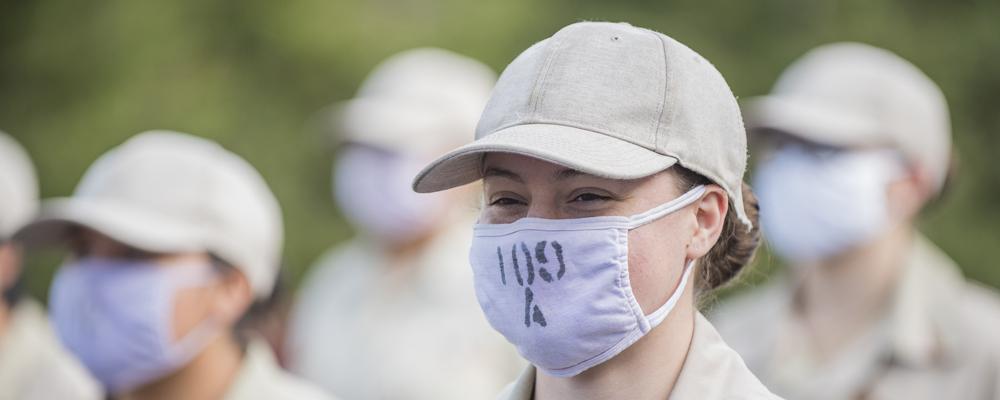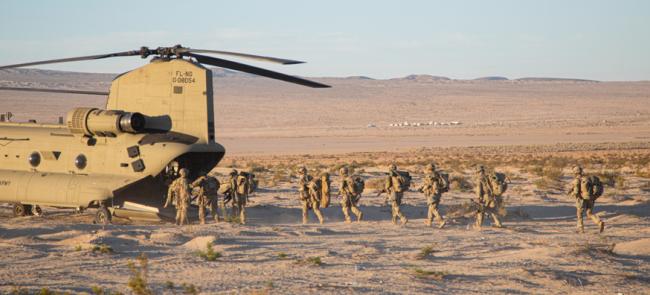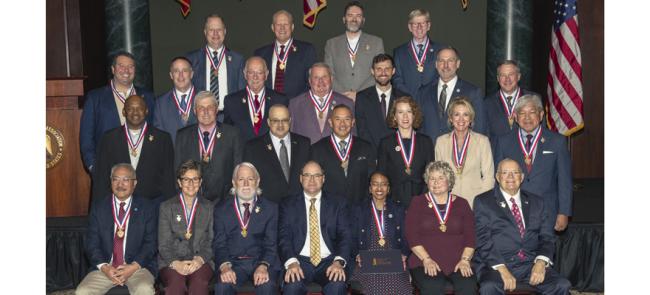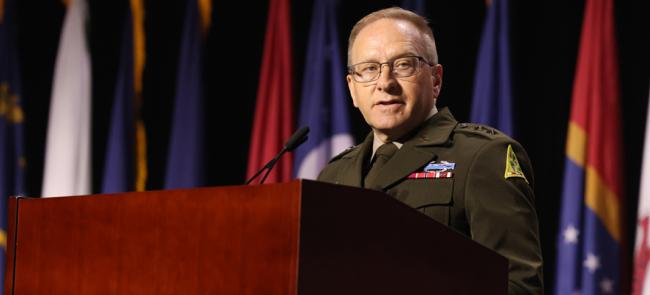
Pandemic ChalleNGe
The National Guard Youth ChalleNGe Program is navigating the obstacles of the coronavirus pandemic with the same perseverance it aims to instill at-risk youth.
Now in its 28th year, ChallenNGe offers high-school dropouts an opportunity to get their education back on track. The military-style program started with one academy in each of 10 states. It has since grown to 39 academies in 29 states, Puerto Rico and the District of Columbia.
Nearly 200,000 cadets have graduated over the years. Most earned their high school diploma or equivalency. Many have gone on to college or the military — options not available to them before the program.
Current and former cadets say the program succeeds where some other youth programs fail because of the cadre, many of whom are current or former Guardsmen. “They genuinely care about you,” says Andres Bruno, a cadet at the Commonwealth ChalleNGe Youth Academy at Camp Pendleton in Virginia Beach, Virginia.
The program begins with the 22-week in-residence phase. This removes cadets from the environment that often contributes to their struggles with traditional education. However, when COVID-19 hit last March, ChalleNGe academies were no different than most other schools.
State and local efforts to slow the spread of the virus forced many to shutter. Cadets at the Mountaineer ChalleNGe Academy at Camp Dawson, West Virginia, had the option of continuing their studies online at home and returning in June for final exams, transferring to a future class, or dropping from the program.
A staff member checked in daily with those continuing online to assess any outstanding needs — educational, physical or emotional. And administrators created a private Facebook group where cadets could connect.
Of the 157 cadets who started at the academy in January 2020, 108 chose to stay in the class, 41 chose a future class and only eight left the program, says Dianna Trickett, the program director.
“I didn’t want to go home because I was so used to the routine,” said one cadet, Analisa Wood, in June. “I was excited to be able to return, take my test and have the chance to earn my diploma. I have had so many opportunities that I wouldn’t have gotten if I would have stayed in a regular high school, and I’m thankful for that.”
Seven academies did stay open last spring with strict safety-based procedures in place. Cadets were in a bubble — no trips home, no visits from family and no field trips or service projects in the community. But they were able to complete the in-residence portion of the program uninterrupted.
“We allowed each state to develop a COVID-19 operational plan based on their individual state situation, guided by rules put in place by their state leadership and health officials,” says Jeffrey M. White, the chief of youth programs at the National Guard Bureau.
Texas could not afford to have such an essential program be stopped by a pandemic.
—1st Sgt. Celsa Reyes, a member of the Texas Guard's Counterdrug Drug Demand Reduction Program
STILL, the pandemic is taking a toll on the ChalleNGe program nationwide. “Two programs, Tennessee’s Volunteer ChalleNGe Academy and Georgia’s Milledgeville ChalleNGe Academy, have closed due to state budget cuts caused by the increasing cost of fighting COVID-19,” White says.
State funds cover 25% of program fees; the federal government pays the rest, he says. Cadets attend at no cost.
Some academies that closed last March remain shuttered. White expects most to reopen “by the end of fiscal 2021.” But many reopened last fall, such as the Texas ChalleNGe Academy in Eagle Lake, Texas, with reduced enrollment to facilitate social distancing.
“Texas could not afford to have such an essential program be stopped by a pandemic,” says 1st Sgt. Celsa Reyes, a member of the Texas Guard’s Counterdrug Drug Demand Reduction Program, which works with cadets in Texas.
Virginia health authorities at limited the Commonwealth ChalleNGe Youth Academy to 69 kids on campus as opposed to the normal 150-160. The current class began in October with 104. Virginia officials are making it work by splitting the group in two. Roughly half attended classes virtually at home for 11 weeks while the other half was at the academy. The two halves then traded places in January. They will graduate together in late March.
All cadets were tested upon their arrival at the academy and then again two weeks later. They are not allowed to leave campus or have visitors.
“We built a plan, trained to operationalize it, built confidence and stayed vigilant,” says Mark Chicoine, the academy director. “I see lots of things we adopted in the COVID world that we’re going to keep when we’re out of the COVID world.” One, he says, is more space between cadets in the barracks, which seems to improve participant behavior overall.
Commonwealth ChalleNGe, like all academies, stresses more than just academics. Core components also include citizenship, life-coping skills, community service, health and hygiene, job skills, physical training, and leadership/followership.
“My life was at a foggy crossroads and being here … made me focus on that path of joining the National Guard and going into college,” says Bruno, the Virginia cadet. “I want to get my bachelor’s in military science to join the Army as an officer and become a JAG, a military lawyer.”
“These young people are worth our investment,” says retired Brig. Gen. Allyson Solomon, the president of the National Guard Youth Foundation, which raises public awareness of ChalleNGe and scholarship dollars for program graduates.
“I’ve heard some of them say that they didn’t have someone who believed in them until they got to this program. You hear some of these kids’ stories … I’m brought to tears. They are resilient,” she says.
THE NGAUS TAKE
NGAUS has been a champion of the National Guard Youth ChalleNGe Program since its inception. The program is the Guard’s contribution to turning around some of the 1.2 million America youth who drop out of high school every year. They are far more likely than graduates to be unemployed or incarcerated. MDRC, a social-policy research organization, recently found that ChalleNGe significantly improves the educational attainment, employability and income-earning potential of participants. And a RAND Corporation analysis determined the program generates $2.66 in benefits for every dollar spent. The return is substantially higher than other evaluated programs that target disadvantaged youth. Congress, at the association’s request, added $75.2 million to the president’s fiscal 2021 budget proposal for ChalleNGe.



